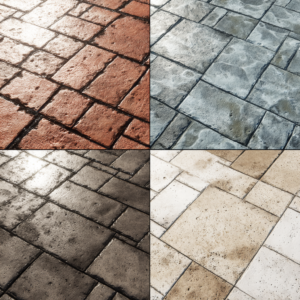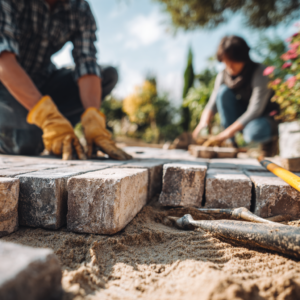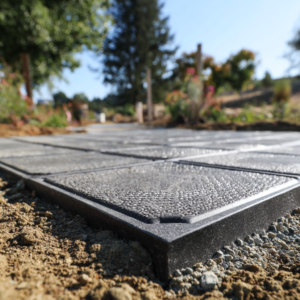A beautiful paver patio is the dream of many homeowners across the US. Few things are as elegant and reliable as pavers. But what about those homeowners who deal with extreme weather? Are there any best pavers choices for cold climate?
It might seem like a minor detail for people who don’t live in regions with extreme low temperatures. But those who do know how much damage the cold can cause, and know the importance of being prepared for the freezing temperatures of winter.
So, is it possible to have a beautiful paver patio that can withstand the cold? Let’s talk about the best pavers materials you can choose for a cold weather, as well as some maintenance tips that can help even further.
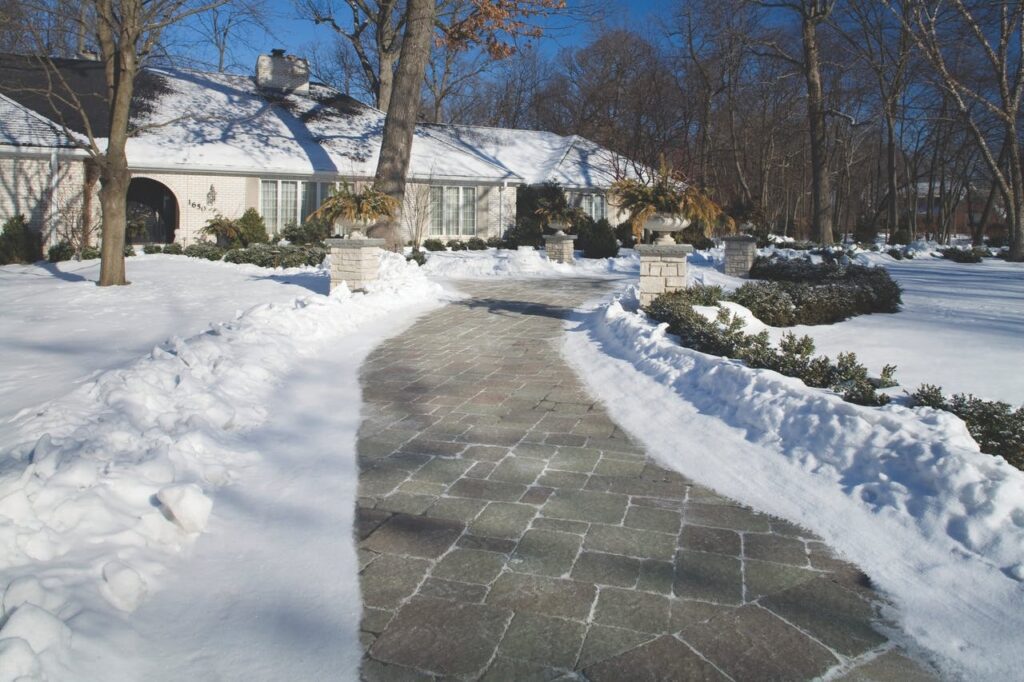
Jump to:
Best Paver Materials for Cold Climate
There are basically three best paver materials you can choose for a cold climate: slate, travertine and porcelain.
Let’s talk about the pros and cons of each one separately.
Slate
Slate is a form of natural stone. A metamorphic stone, to more precise. That means it is a stone formed in layers of flat sheets of rock pressured by the movement of the Earth’s crust.
Being a natural stone, slate is more expensive than your more traditional choices of pavers, costing anything from $15 to $40 per square foot.
That cost is compensated, however, by the incredible beauty of slate. Its unique look and colors make it a prime choice from an aesthetic point of view.
And it is, in fact, extremely durable and resistant against cold climates. It is a porous stone, but way less porous than other options and, after sealing it (which we will talk about ahead), it is an excellent choice against cold weather.
Travertine
For years, travertine was considered a bad choice to be used in cold weather. Nowadays, hardscape professionals consider it a good choice, as long as it is sealed.
Like slate, it is a natural stone, so it is more costly than your average paver choice, with prices usually ranging from $13 to $30 per square foot.
The look of travertine is perfect for homeowners who want a more classical look, thanks to “rustic” aspect of travertine. Installation of travertine is easier than the installation of slate, so you can also save on that front.
But be mindful. It is imperative that you use the best possible sealer alongside travertine. Being such a porous material, it can give you some headaches in maintenance if not properly sealed.
Also, travertine is very susceptible to acid damage, so make sure to use only cleaning products that are pH-neutral on it.
Porcelain
Porcelain pavers have been dominating the market recently due to their extremely cost benefit. With incredible durability and easy maintenance, it is one of the best options of pavers at the moment, and one that easily withstand cold climates.
Porcelain pavers are man made ceramic tiles that undergo through extreme pressure and high temperatures at the moment of their fabrication. This creates an incredibly resistant material.
What’s even more interesting is that, unlike our previous options, porcelain pavers are completely non-porous.
That means they don’t absorb any type of fluid and are especially resistant to freeze-thaw cycles, making them a virtually perfect choice for a cold climate.
Porcelain pavers are also way cheaper than our previous natural stone options, costing about $7 – $9 per square foot.
How Cold Climate Affects Pavers?
Cold temperatures can cause damage to the pavers through something called freeze-thaw cycles.
Freeze-thaw is the constant variations in temperature that a paver can go through under cold climate. More precisely, the freezing and defreezing of it.
In the case of unsealed porous paver, the freeze-thaw cycle can cause real structural damage by freezing the water absorbed by the pavers themselves, making expand and turn into ice inside them.
That is why it is so important to seal porous pavers, to prevent water absorption as well as stains and etches.
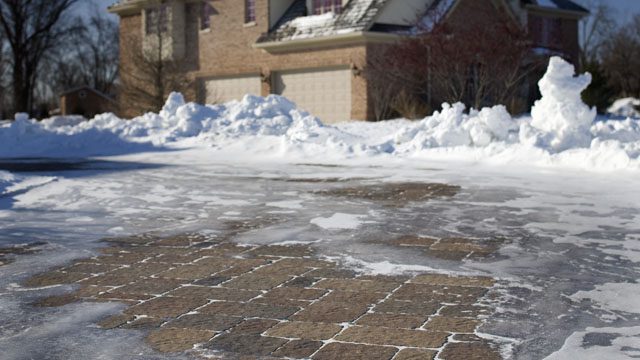
Installation of Pavers in Cold Climates
It is ideal for cold climates that you perform a dry installation. That means using sand to create an interlocked system, allowing the pavers to expand and retract without damaging them. This article can give you some clarifications on how to perform a dry installation.
As important as knowing what are the best pavers for a cold climate, is performing a good paver installation. As fun as it can be as a DIY project, things can go drastically wrong if you’re not confident in what you’re doing.
In that case, your best bet is to ask professional help. Professionals in the hardscape business can help you with the entire project, from choosing the right pavers until the installation and sealing.
We here at JS Brick have been offering installation and maintenance of pavers for the past 20 years, with an extreme satisfaction rate from our customers.
If you live in Florida, give us a call right now at +1 941 586 9140 or email us at [email protected]. We would be happy to hear from you and help you with any hardscape need you might have.

